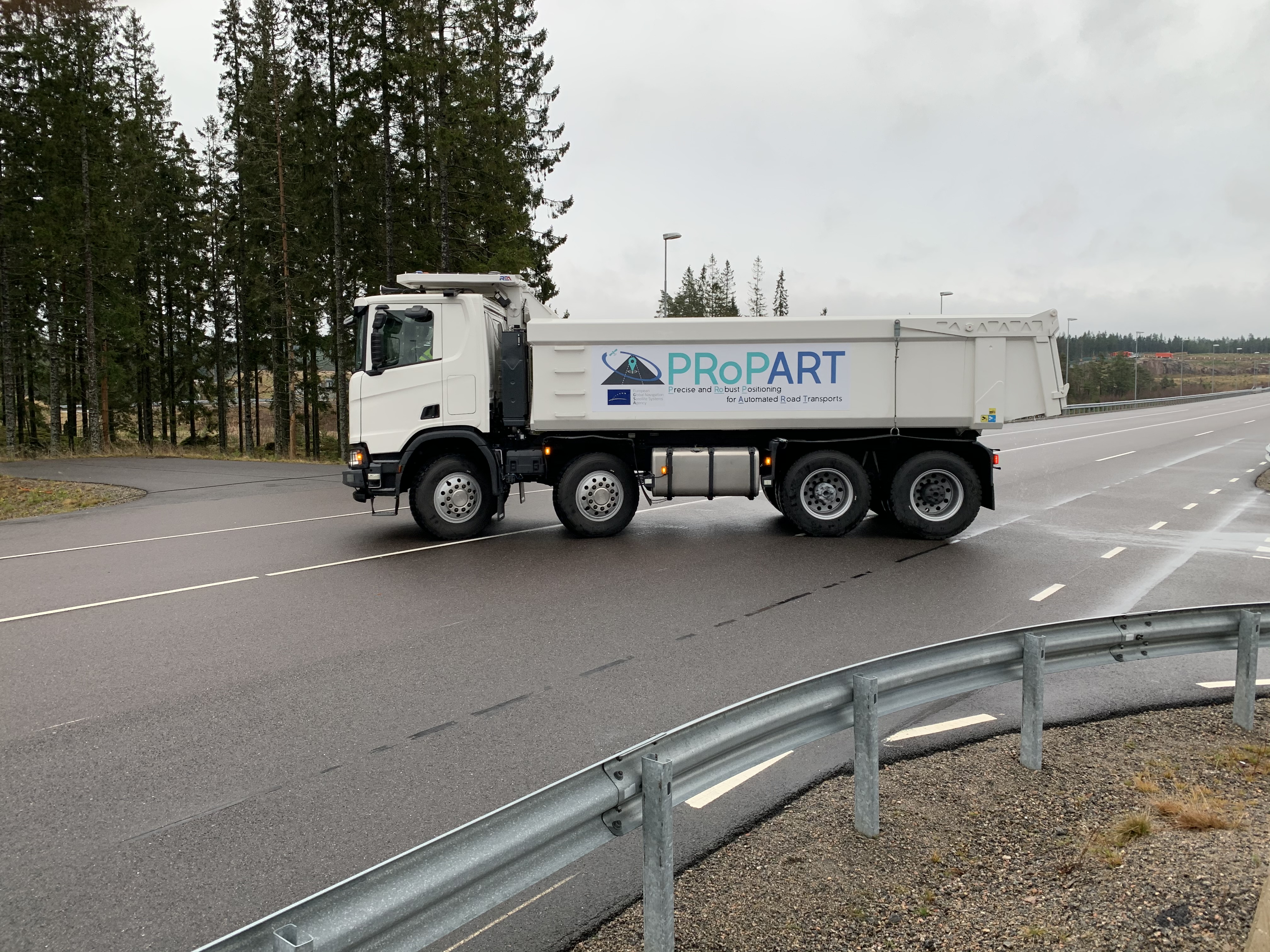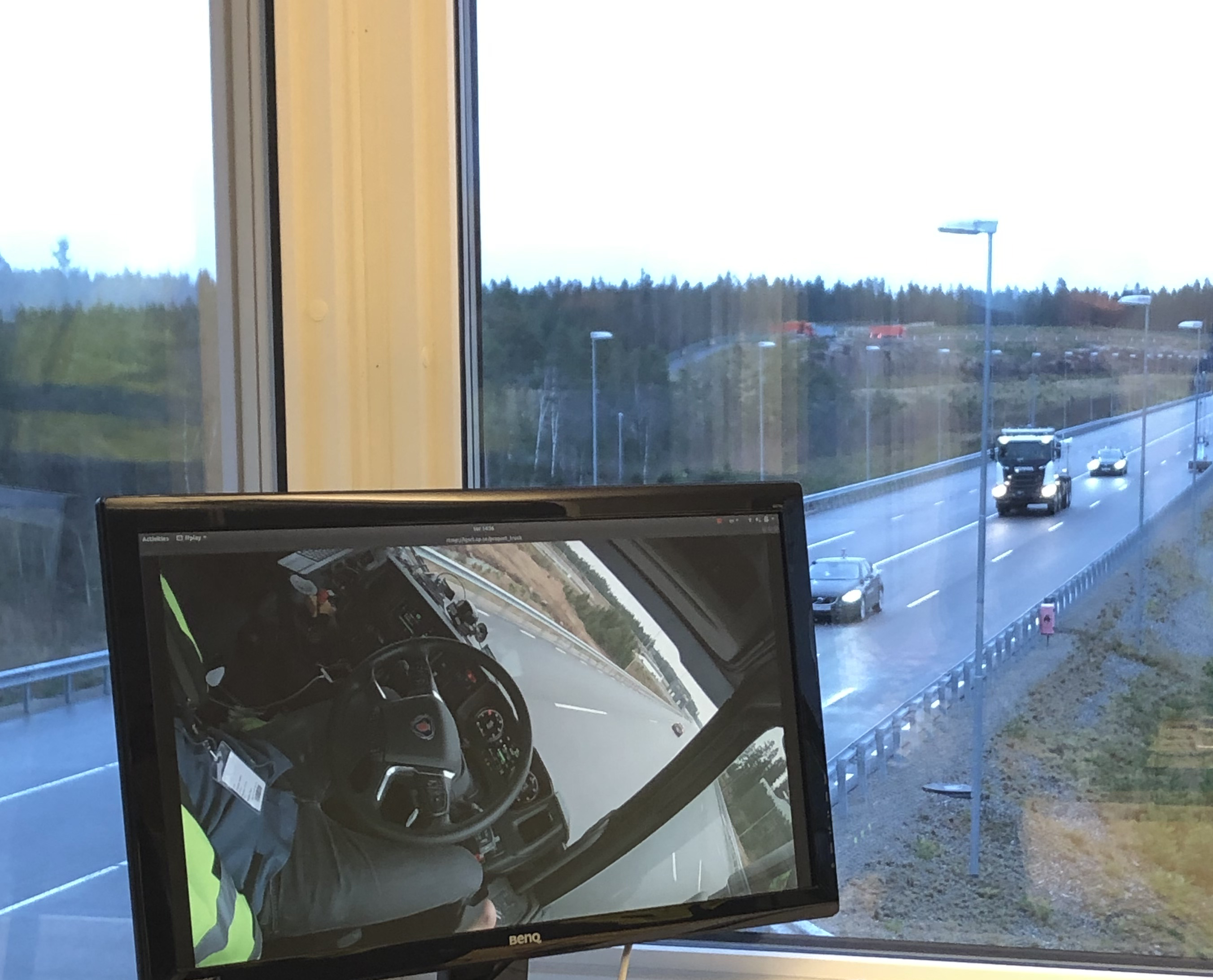On the road to autonomous driving – automated merging maneuvers
Nuremberg, Germany/Borås, Sweden: When merging and overtaking in complex traffic situations, drivers must pay extreme attention. A lapse in concentration can sometimes lead to accidents – something that automated driving assistance systems work to prevent. The Fraunhofer Institute for Integrated Circuits IIS, together with its project partners RISE, Scania, Waysure, Ceit-IK4, Baselabs and Commsignia, has made another successful step towards autonomous driving as part of an EU-funded project PRoPART. On a test track in Sweden, automotive industry experts were able to see how well the automated merging solution performed in an impressive live demonstration with a truck.


Autonomous driving is one of the most important topics in the automotive industry. Vehicles on the road today already perform certain steps on behalf of the driver, such as parking. Together with its project partners, the Fraunhofer IIS has developed a precise and robust position determination system for use in autonomous trucks as part of the Precise and Robust Positioning for Automated Road Transports project, or PRoPART for short. In a live demonstration at the AstaZero test site near Borås, Sweden, on November 21, 2019, a truck successfully merged between two cars driving alongside it – in a fully automated maneuver.
New positioning solution reduces risk of accidents
Autonomous driving is all about interactions between different systems in the vehicle, about connecting vehicles and equipping them with precise and robust navigation solutions. Here, the challenge is to ensure that different automated driving systems deliver precise and reliable positioning information. The solution is the intelligent combination of sensors: The developers are utilizing all the advantages of satellite signals in conjunction with other navigation solutions, such as radar and cameras in the vehicle. Supplemented by reference stations along the route, this combination of a global navigation satellite system (GNSS) and sensor data enables highly-available position solutions up to the decimeter range. “This is a key step on the road to autonomous driving”, explains group manager for precise GNSS receivers Matthias Overbeck from Fraunhofer IIS. “It’s about ensuring the merging maneuver is precise and avoiding accidents – something we can achieve only with highly accurate and reliable positioning technology.”
Satellite signals achieve greater accuracy thanks to Fraunhofer GOOSE technology
With its “GOOSE” GNSS receivers, Fraunhofer IIS provides the technology that ensures highly accurate and reliable positioning in the PRoPART project. Satellite signals, however, are not available in tunnels or under bridges, or other road users sometimes block them. Such circumstances quickly lead to positioning errors of several meters, which would be fatal in an automated merging maneuver; the driver would immediately have to take back control of the wheel. However, the technology that Fraunhofer IIS has developed can bridge signal interruptions for short periods of time, potentially obviating the need for the driver to intervene at all.
Authenticated satellite signals from Galileo enhance safety
These days, a variety of electronic systems for providing satellite navigation signals are available and are often used to generate fake positions for gaming apps on smartphones. Such systems can be dangerous because they could potentially disrupt all satellite receivers in a larger radius completely undetected. GOOSE, on the other hand, already makes use of Open Service Navigation Message Authentication (OS-NMA), which is provided by the Galileo satellite navigation service but not officially available until 2020. OS-NMA transmits encrypted keys on the Galileo satellite signals that make it extremely difficult to fake a position, thus ensuring that reliable positioning information can be provided to vehicles in the future.

